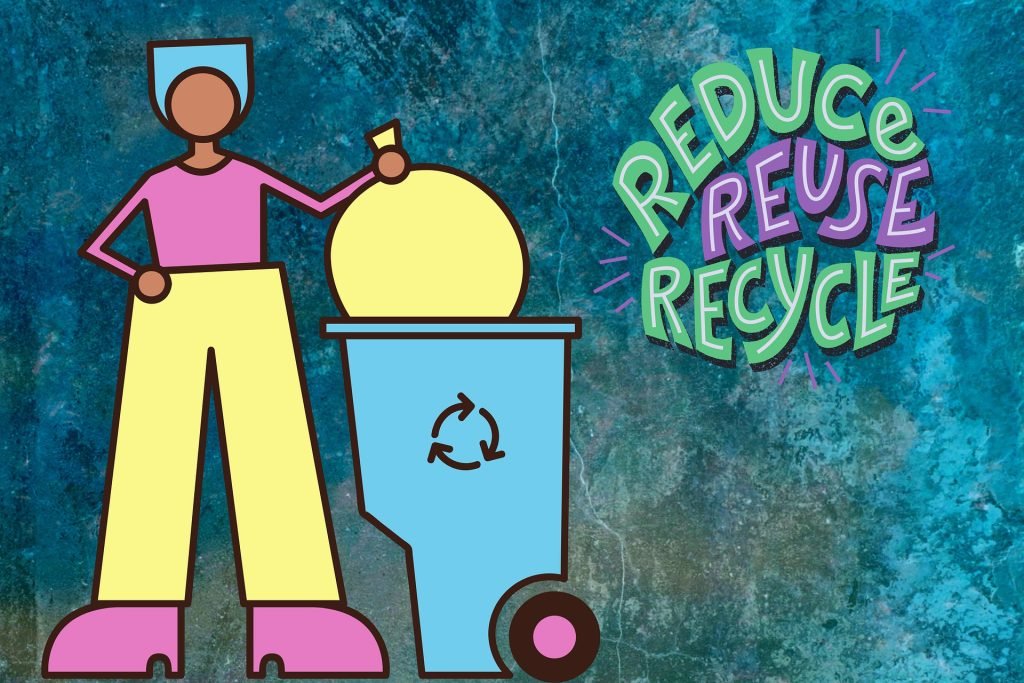The Complete Guide to Climate Change and Why You Should be Concerned
Climate change is one of the most pressing issues of our time. It is a global phenomenon that will have an impact on all aspects of life on Earth.
The release of greenhouse gases into Earth’s atmosphere has been accelerating since the Industrial Revolution and is predicted to continue to increase until the global temperature stabilizes.
Climate change is mainly due to greenhouse gas, the carbon dioxide, which is released from burning fossil fuels and other human activities. Carbon dioxide emissions have gotten worse every year since 1997.
This increase in carbon dioxide and other greenhouse gases has caused temperatures to rise globally by approximately 1 degree Celsius over the past 150 years with the United States being responsible for approximately 5% of global carbon dioxide emissions.
When it comes to climate change, the individual is just as important as the government. One can reduce one’s carbon footprint by changing their daily routine and taking care of their personal needs.
This article discusses the effects of climate change and how to combat them. It also gives tips on sustainable living through reduction in one’s carbon footprint.
The planetary Carbon Footprint
Climate change is the result of three major factors: the release of greenhouse gases, natural variability in the Earth’s climate system, and human-induced changes to the landscape.

Climate change is mainly due to Carbon dioxide emissions, a greenhouse gas that is emitted into the environment by human activities including the transportation, agriculture, construction, and energy sectors.
In the last century, burning fossil fuels has increased the level of carbon dioxide in the atmosphere from 280 parts per million (ppm) to 400 ppm. This increase in atmospheric CO2 leads to global warming, changes in precipitation patterns, and ocean acidification.
The carbon footprint, therefore, is the measure of how much carbon dioxide (CO2) is produced or emitted during the manufacture, transportation, use, and disposal of a product.
The main source of human-induced greenhouse gas emissions is the burning of fossil fuels, such as coal and oil, for electricity and heating in homes. This causes global warming which can cause several problems for the Earth’s climate, including more severe weather and more severe droughts.
Pollution from cars also has an impact on our world’s climate, by releasing greenhouse gases. The Earth’s climate is impacted by human-induced natural changes, too. For example, rising sea levels are caused when the ice caps of the North and South poles melt.
In addition to causing flooding in certain areas of the world, this will also lead to more severe storms and hurricanes in other locations. There is also a problem with air pollution and environmental degradation because contaminants such as benzene, toluene, and xylene are released into the air when they are burned in cars.
These chemicals then impact nearby plants and animals.
In addition to human-induced changes, the Earth’s climate is also impacted by natural changes or seasonal changes and patterns.
Furthermore, the water cycle has a significant impact on the climate of Earth, for example, one way that this cycle affects temperatures is through the glacial melt.
When ice caps melt, they release great amounts of water into oceans and other inland bodies of water such as lakes and rivers. This water is then transported to the oceans where it can either evaporate into the air or be absorbed by plant life.
United Nations and International Initiatives To Combat The Climate Change
The release of greenhouse gases, natural variability in the Earth’s climate system, and human-induced changes to the landscape are putting the planet at risk, and it is not just happening in America: climate change has become a global issue.
In addressing the climate change problem, the United Nations have created initiatives to reduce emissions, tackle other environmental concerns, and jobs for gender equality. They also want to make sure that the finance is available, that sustainable infrastructure is built, and unlock nature-based solutions too which would include advancements in adaptation.
The UN and other multi-lateral organizations have been a vital part of solving the world’s problems. This is evident from their work on things like climate change where they bring together experts in science, diplomacy, and many other fields to facilitate a safer environment for all.
This has also seen governments, businesses, and civil society members working together to reduce the effects of climate change.
As the convener of climate change initiatives, UN acts as a driver of collaborative behavior between nations. It helps share ambitious ideologies, which will be needed to achieve the agreed target of limiting global temperature rise to no more than 1.5 degrees Celsius.
Indeed, countries across the world need to work together to reduce their carbon footprints to keep the Earth livable for future generations.
In this context, there have been a lot of international initiatives to combat climate change. Indeed, a common strategy and binding targets must be defined on a global scale to effectively combat it. These initiatives are making progress happen faster than ever before.

Some of the international initiatives to combat climate change include:
- Copenhagen Climate Change Conference
- Kyoto Protocol
- Launch of the European Union Emissions Trading System
- Paris Agreement
- Rio Earth Summit
- Intergovernmental Panel on Climate Change (IPCC)
- United Nations Sustainable Development
Four Ways You Can Reduce Your Carbon Footprint as an Individual
At the individual level, the personal carbon footprints are a measure of an individual’s impact on the environment. This can be measured by the total amount of greenhouse gas emissions from a person, as well as their daily activities, such as driving and eating meat.
Therefore, as an individual, it is our responsibility to take care of the environment because the pollution levels are increasing day by day and we need to take steps to reduce our carbon footprint. There are many ways to reduce your carbon footprint. We can do this by following these 4 ways:
By reducing the use of fossil fuel energy in our homes, offices, and vehicles

Individuals contribute to the overall carbon footprint by driving their cars to work, heating their homes during winter, and powering up appliances. Having a renewable energy source is one way to reduce your carbon footprint.
Using renewable energy sources like solar, wind, and hydroelectric power is better for the environment because it does not pollute the air with harmful gases such as carbon dioxide.
Battery reconditioning or recycling is also a small effort on our part that can be a big contribution to combating climate change.
By choosing products that have less impact on the environment like those with recycled content or organic ingredients

By making small changes to our everyday lives, like choosing products with recycled content or organic ingredients, we can have a big impact on the environment. These products create less carbon dioxide emissions and have a lower personal carbon footprint.
We can reap the benefits of these products by shopping at stores that offer them. They include green beauty products that are easy to incorporate into your routine and have a huge impact on the environment.
Some of these are also vegan, which means they do not contain any animal byproducts, while others have an all-natural ingredient list with no synthetic chemicals.
By using renewable energy sources like solar energy, wind power, and hydroelectric power

Individuals contribute to the overall carbon footprint by driving their cars to work, heating their homes during winter, and powering up appliances. Having a renewable energy source is one way to reduce your carbon footprint.
Using renewable energy sources like solar, wind, and hydroelectric power is better for the environment because it does not pollute the air with harmful gases such as carbon dioxide. Solar panel technology is a cost-effective investment.
You’ll find relief from power cuts and save money by switching to off-grid energy sources.
By planting trees to offset our carbon footprint

A personal carbon footprint is created for every human being on earth. It is the amount of greenhouse gas emissions that a person creates from consuming fossil fuels and animal agriculture. The average American creates around 20-40 tons of CO2 annually.
Trees are one of the best ways to offset your carbon footprint and reduce your carbon dioxide emissions.
Planting trees not only offset the carbon released by burning fossil fuels but also increases the absorption of carbon dioxide. This is because trees not only absorb carbon dioxide during their lifespan but also release oxygen. The benefits of planting trees are endless, but here are some major benefits:
They provide oxygen and reduce air pollution. They help clean water supplies by filtering the water that runs through their roots and trees; create a natural habitat for wildlife and prevent floods, erosion, and landslides.
Conclusion
In conclusion, there are many ways to reduce your carbon footprint. Some people think that they can’t do anything to help the environment because they don’t own a car or live in a city. But there are many simple actions that we can take to make the world a better place.


